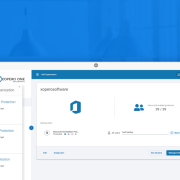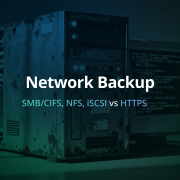
Windows Server Backup: Best Practices for Data Security
Windows Server is a key element of IT infrastructure in many organizations around the world. As an operating system designed to handle network functions, applications, and database management, Windows Server requires constant attention, especially in terms of backup, to operate efficiently and securely. Windows server backup is not just about protecting data from loss but also from threats such as ransomware attacks, hardware failures, or human errors. In this article, we will detail the best practices and strategies for backing up Windows server that system administrators can apply to enhance performance, reliability, and security levels. We will focus on ensuring business continuity and protecting valuable corporate assets.
1. Planning a Backup Strategy
Effective backup strategy planning requires a thorough analysis of the company’s needs and expectations in the context of data protection. Understanding which data are crucial for the company’s operations, how often they change, and the consequences of their loss is fundamental.
Setting Business Objectives and Backup Requirements
The implementation of a backup strategy should begin by defining key parameters, such as RPO (Recovery Point Objective) and RTO (Recovery Time Objective). These parameters indicate the maximum acceptable time to restore the system and the extent of data that can be lost without a significant impact on the organization’s operations. The choice of an optimal backup method should be based on a detailed analysis of the data specifics and operational requirements, enabling the application of these key parameters: RPO and RTO.
During the design of backup policies or configurations of high-availability IT systems, it is essential to understand and consider the specific needs of each organization. It is crucial to recognize which processes are critical to business operations, which applications or services are essential, and how backup strategies or high-availability solutions can ensure the uninterrupted operation of these elements.
What is RTO and RPO?
- RPO (Recovery Point Objective) defines the maximum allowable time that can elapse from the last data record to the point of failure, from which data can be recovered.
- RTO (Recovery Time Objective) specifies the time within which systems and applications must be restored and back online after a failure to ensure business continuity. If RTO is two hours, then all critical systems must be operational within two hours of the failure.
What is the Difference Between RPO and RTO? – read.
Choosing a Backup Strategy Tailored to Business Needs
The backup strategy must consider many factors, including:
- Backup frequency: how often data should be secured, closely linked to the RPO parameter.
- Type of backup: Deciding between full, incremental, or differential backup depends on the dynamics of data changes and available resources. An important option is also the “forever incremental” backup, where only incremental backups are performed after one full backup. This method saves time and space on media while simplifying the data restoration process.
- Automation: To minimize the risk of human errors and ensure the regularity of backups, automating the process is crucial.
Regular backups, both full and incremental, allow for the rapid restoration of systems to operational status after a failure. It is important that backups are stored in a secure location, preferably away from the main company premises—remember the 3-2-1 backup rule.
2. Secure Backup Implementation
After selecting the appropriate strategy and tools, the next stage is the implementation of the backup system. This stage includes configuring the software, setting the backup schedule, executing the initial backups, and determining the policies for data storage and retention.
Configuring Selected Tools and Technologies
The backup system configuration should be conducted by experienced IT administrators, who can appropriately adjust the settings to the needs of the organization. This includes both hardware and software configurations.
Automating Data Backup Processes
Automation plays a crucial role in an effective backup process. It enables regular and automatic backup execution without the need for manual intervention, significantly reducing the risk of missing key backups and limiting the impact of human errors.
Thanks to automation, backups are performed systematically and automatically, eliminating the need for manual supervision and minimizing the likelihood of missing an important backup or human error. Including automation in the backup process significantly increases its efficiency. It ensures that backups are carried out regularly and automatically, minimizing the possibility of missing critical data and reducing the risk of errors resulting from human intervention.
Encrypting Data and Other Practices Increasing Backup Security
Data encryption is a key component of a security strategy for storing backups. It includes securing data both during transmission (encryption in-flight) and at rest (encryption at-rest), protecting against unauthorized access and loss of confidentiality.
- Encryption in-flight is used when data is transmitted between storage locations or from local systems to the cloud. The use of strong encryption protocols, such as TLS (Transport Layer Security) or VPN (Virtual Private Network), is essential to ensure that data is protected during transmission through public or unsecured networks.
- Encryption at-rest refers to data stored on physical media, such as hard drives, cloud storage systems, or other external data carriers. Employing disk-level encryption, such as BitLocker for Windows environments or LUKS for Linux systems, ensures that data remains secure even if the physical carrier is compromised or stolen.
To ensure the highest level of security, it is important to use encryption algorithms recommended by current best practices in cryptography. Organizations should also regularly review and update their encryption methods to match modern threats and standards, such as those specified by NIST (National Institute of Standards and Technology) or other certified security institutions.
3. Data Storage Management
Managing the storage of backup data is not only about ensuring data availability in case of restoration needs but also about protecting it from damage, theft, or destruction caused by various factors. Properly managed data storage requires careful consideration of many aspects, including storage location, encryption methods, access policies, and regular audits and tests.
Local vs. Remote Data Storage
Local data storage offers quick access to backups and control over the physical data carriers. Remote storage, especially in the cloud, provides increased resilience to local failures and disasters. The best strategy often involves combining both methods, known as a hybrid approach.
Local Storage for Increased Security
While the cloud is often chosen as a storage location for backups due to its scalability, flexibility, and reduced initial costs, more and more organizations are considering returning to local backup solutions. The cloud also offers additional security through the geographical dispersion of data, which protects against local failures.
However, local data storage on internal servers or dedicated carriers provides more direct control over the security and access to data. Decentralization can offer better protection against external attacks and system failures, making it an attractive choice for organizations interested in strengthening the security of their backups. Local backup solutions allow for faster data restoration and increase independence from the availability of external services, which is particularly important for critical applications and data.
Best Practices for Local and Cloud Data Security
Regardless of the chosen storage method, it is important to apply best practices for security, such as regular data integrity tests, protections against fire and flood for local backups, and advanced encryption and authentication for the cloud.
4. Testing and Verifying Backups
Regularly testing backups is a key component of any data security strategy. Conducting restoration tests allows for the verification of backup processes’ effectiveness and the identification of potential issues before real failures occur.
How to Conduct Restoration Tests:
- Planning cyclic tests: Establishing regular dates for data restoration tests to ensure that all system components are regularly verified.
- Using isolated environments: Conducting tests in isolated environments ensures that production processes are not disrupted.
- Documenting results: Each test should be documented along with notes on any issues and actions taken to resolve them.
5. Monitoring and Updating the Backup System
Managing a backup system requires not only its implementation but also continuous monitoring and updating to ensure that all system components are functioning properly and are up-to-date in terms of security.
Key Aspects of Monitoring:
- Software updates: Regular updates of backup software and operating systems to provide the best protection against new threats.
- Performance monitoring: Tracking the performance of the backup system, including backup and data restoration times, to ensure they meet business and technical expectations.
- Alert management: Setting up notification systems that inform administrators of any issues with the backup or restoration of data.
6. Integration with Other Security Systems
Integrating the backup system with other IT security tools can significantly enhance the overall protection of data and infrastructure. Using advanced technologies such as SIEM (Security Information and Event Management) or ransomware countermeasures can provide an additional layer of security.
Integration Examples:
- SIEM: Integration with SIEM systems allows for central monitoring and analysis of security events that may indicate problems with the backup.
- Ransomware Defense: Implementing specialized solutions to defend against ransomware can identify and block attempts to attack before damaging backups.
7. Education and Training
Increasing employees’ awareness and knowledge about the importance of backups, creating backups, and proper procedures in case of failures is as important as the technical aspects of the backup system.
Ways to Educate Employees:
- Regular training: Organizing regular training on data security, backup procedures, and data recovery.
- Failure simulations: Conducting failure simulations so employees can practically understand restoration and recovery processes.
- Informational materials: Providing employees with regular updates and guides on changes in backup policies and technologies.
How Xopero ONE for Windows Server Can Protect Your Company’s Data?
Considering the importance of the data stored on company servers, every IT administrator faces the question: how long can our business survive without access to key systems and data? Xopero ONE offers a comprehensive backup system for any IT infrastructure, ensuring data security and business continuity, even in the most critical situations.
Effective Windows Server Backup
Xopero ONE effectively secures the physical environment. It supports a wide range of platforms, including Windows Server from version 2008 R2+, various Linux distributions, and NAS devices. This makes Xopero ONE a versatile solution for diverse IT infrastructures.
File Copy and Smart Image Backup
You can schedule automatic backups of files or disk images for physical servers with Windows and Linux systems as well as network shares. With filtering options, you have full control over the content of the backups, allowing you to tailor the backup to the specific needs of your organization.
Full, Incremental, and Differential Backups
Xopero ONE offers full, incremental, and differential backups. This enables the creation of complete copies of all data, followed by incremental or differential backups that only include changed data blocks. This significantly reduces the size of the backups and speeds up their creation, which is crucial for efficient time and resource management. Additionally, Xopero ONE offers a “forever incremental” method, where after one initial full backup, only incremental backups are performed, further optimizing the backup process.
Application-Aware Backup
The program allows for the backup of selected files and folders or the entire disk image, even while the server is active, maintaining complete data consistency. This ensures that all information is protected and can be restored in an intact state.
Protection for an Unlimited Number of Servers
With features like mass deployment, global deduplication at the source, and compression of over 70%, Xopero ONE easily secures even the most complex infrastructures. These technologies minimize the required disk space and optimize backup processes.
Native Database Backup
Xopero ONE performs native backups and restores databases such as MS SQL, MySQL, PostgreSQL, Firebird, and Oracle. This is crucial for protecting data that constitutes the most significant part of a company’s business assets.
Pre/Post-backup and Post-snapshot Scripts
The ability to run scripts before, during, and after a backup gives full control over the backup creation process. This allows the backup to be tailored to the specific requirements and procedures within the organization.
Ransomware Protection
Xopero ONE not only protects against the effects of ransomware attacks but also shields the infrastructure from the spread of threats. Non-executable files in the copy, Xopero Immutable Storage, and replication are just some of the features it offers to protect data against this increasingly common threat.
Effective Windows Server backup is a fundamental element of every company’s security strategy. By understanding and implementing best practices, organizations can not only prevent data loss but also significantly increase their resilience to failures and cyberattacks. Implementing solutions such as Xopero ONE, companies gain confidence that their data is protected, allowing them to focus on business development without worries about potential IT disasters. Regular testing, monitoring, integration with other security systems, and continuous employee education are key steps every organization should take to secure their critical digital assets.







